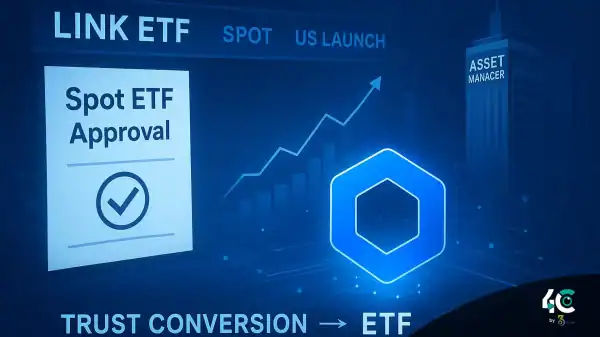Want to track your crypto investments smarter? This guide shows you how to build an AI crypto portfolio tracker step by step for better control and insights.
Why Build a Customized Crypto Portfolio Tracker?
At any given time, it is very difficult to keep track of cryptocurrency prices, as it is a highly volatile market and open 24/7. A custom-built AI-powered tracker offers.
- The moment they change, you can track prices, your balances, and your portfolio across exchanges.
- Use AI for predictive analytics to anticipate trends, assess risks, and find opportunities.
- Make the tracker your own investment goals, risk tolerance, and selected cryptos.
- To save valuable time and effort on tasks, automate rebalancing alerts and reports.
A Guide to Make Your Own AI Crypto Tracker
1. Define Your Requirements
Consider your tracker’s intended use before creating it.
- What metrics will you track? (e.g., price movements, ROI, volatility).
- Which exchanges or wallets do you use?
- Want tax calculation, sentiment analysis, or risk management features? We have software that can do it.
Making and designing your tracker’s functionality is your aim.
2. Gather Data Using APIs
It is necessary to have access to real-time cryptocurrency data to create a useful tracker. Use APIs from reputable providers to obtain information.
- We can get the coin’s price feed from CoinGecko, CoinMarketCap, or the Binance API.
- To view your balances, please consider using the exchange-specific APIs for Coinbase Pro, Kraken, etc.
- You can track on-chain actions using Etherscan or The Graph.
3. Leverage AI for Advanced Analytics
When you’ve obtained the data, use AI models to enhance your tracker’s features.
a. Sentiment Analysis
NLP methods help analyze social media, news articles, and forums to assess market sentiment. We utilize TextBlob and a Hugging Face transformer to classify texts as bullish and bearish.
b. Predictive Modeling
Create price prediction models using machine learning. Techniques include.
Forecasting with time series (ARIMA, Prophet, etc.)
Simple Neural Learning and Models.
c. Risk Management
Leverage the power of artificial intelligence tools for the calculation of metrics such as VaR, Sharpe Ratio and correlation matrix. It helps you lessen your exposure to risky assets by diversifying nicely.
4. Design a User-Friendly Interface.
Users can effortlessly access all functions on the mobile app. Options include.
- Use frameworks like Flask or Django to create a web application for the dashboard.
- Create a mobile app with React Native or Flutter.
- You can develop desktop software using Electron.
You can use visualization libraries like Plotly, Matplotlib, or D3.js to show charts, graphs, and portfolio divisions.
5. Automate Alerts and Notifications
Set up automated alerts for key events, such as.
- Price thresholds are being breached.
- The portfolio value may drop below a certain percentage.
- You will receive notifications when news or social media activities impact your holdings.
You can send SMS notifications using Twilio services or send an email alert using smtplib in Python.
6. Secure Your Tracker
Security is essential for safeguarding money. Follow best practices.
- Encrypt API keys and private wallet information.
- Opt for strong authentication schemes like OAuth and 2FA
- Regularly update dependencies to patch vulnerabilities
7. Test and Optimize.
Be sure to test your tracking device in different situations. Continue to work on the AI models and develop new features based on feedback.
Benefits of an AI-Powered Crypto Portfolio Tracker
Enhanced Decision-Making: Access actionable insights derived from AI analysis to make informed trading decisions.
Time Savings: Automate routine tasks and focus on strategic planning.
Improved Accuracy: Minimize human error with precise data collection and analysis.
Scalability: Easily expand the tracker to accommodate additional cryptocurrencies, exchanges, or users.
Tools and Technologies to Get Started
Here’s a list of essential tools and technologies for building your tracker:
Programming Languages: Python (for AI/ML), JavaScript (for frontend), and SQL (for databases).
APIs: CoinGecko, Binance API, Etherscan, etc.
AI Frameworks: TensorFlow, PyTorch, Scikit-learn.
Visualization Libraries: Plotly, Matplotlib, D3.js.
Cloud Platforms: AWS, Google Cloud, or Azure for hosting and scaling.
Database Solutions: PostgreSQL, MongoDB, or Firebase for storing data.
Conclusion
Begin by defining your requirements to develop a customized crypto portfolio tracker using artificial intelligence. Next, collect your data with the help of APIs. AI can assist in forecasting and managing risk sentiment analysis. Thereafter, develop a simple interface with visuals. Make sure that your system is safe; automate your alerts, and continuously test and optimize it. When you use measures such as real-time data, you can create a tool that is compelling for your investment targets and preferences.


































